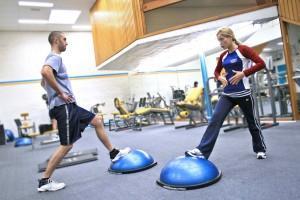
Beyond the regular weekly training session(s), it’s important for the fitness professional to be aware of any other exercise activity in which their client is also participating daily. It’s critical that the fitness professional and client share an honest, open approach with consistent communication to achieve success together in reaching the client’s fitness goals. Without this trusting understanding, the fitness professional and client will not be able to achieve success together. Therefore, having all of the personal information below will help the fitness professional design the best-customized routine for their client:
- Work Life – The fitness professional should be aware of their clients’ daily physical life and habits. Your clients’ workday
can have potentially negative affects on their bodies, even if they don’t engage in strenuous physical activity. For instance, if your clients sit excessively, then they probably have over-active (tight) hip flexors, and having them perform crunches to work their abdominals would probably not be the best choice for them. Take stock in how your clients “get through” their workday. Ask them these important questions: What do they physically do for work? Does their job consist of sitting, standing, or a specific type of physical activity? If they don’t currently work, then what type of physical activity makes up their typical day? These open-ended questions that you ask your clients will give you the right answers into helping you create the appropriate routine for your clients so that your training session can serve as an opportunity to reverse any harmful effects of your clients’ work life. - Exercise Classes – The fitness professional should always be aware of any exercise classes that their clients take in between training sessions, to then factor the effects of that activity into how their training sessions are structured. For example, if your clients takes an intense spin class the day before your session, but you were not made aware, then your plan for a leg-dominant approach may be more than they can effectively execute. Additionally, your clients may have certain muscle groups that are over-active (tight) and under-active (weak) and specific classes could be more of a detriment to them than a beneficial exercise. Encourage open and consistent communication so that you’re always aware of how you can best adjust your training sessions in between other exercise classes in which your clients partake.
- Team Sports – The fitness professional must be aware of their clients’ participation in organized team sports, because these activities could influence preparation for their clients’ sessions. For example, if your clients plays an organized sport that is either leg-dominant, shoulder-dominant, or elbow-dominant, you will need to restructure your program for them tailored to what muscle groups are conversely well-rested or not primarily used. You may also need to perform some corrective exercises on your clients if needed, especially if they play contact sports, for their over-active and under-active muscles. Moreover, being aware of your clients’ participation in a specific sport outside of your sessions has another positive advantage. You could dedicate some of your clients’ sessions together to train them specifically for that sport they are passionate about to help them become an even more accomplished athlete.
- Homework – As a fitness professional, you may decide to write your clients meticulous step-by-step exercise routines for them to perform as homework for when you are not present with them. It’s essential to provide clear instructions for your clients to perform these exercises correctly by engaging the proper muscle groups and even more importantly so they don’t injure themselves. Be mindful not to advance them too quickly or repeat certain exercises they might have just performed easily in their workouts alone. Thus, it’s critical to check in with them consistently and monitor their homework progressions before your next session together. Again, communication is truly vital to identify the correct progressions for you and your clients’ sessions together.
Was this Article Helpful?
If this article was helpful to you, please consider linking this article to your own blog or sharing this through the social buttons below. You will also find other great articles at “Ask An Expert“.
- 3shares
- 2Facebook
- 1Twitter
- 0Pinterest
- 0LinkedIn
- The Role of Exercise in Stress Management - May 9, 2017
- X-Push Up - December 27, 2016
- Fit Pros, How To Properly Progress Your Client’s Push-Up? - October 26, 2016















